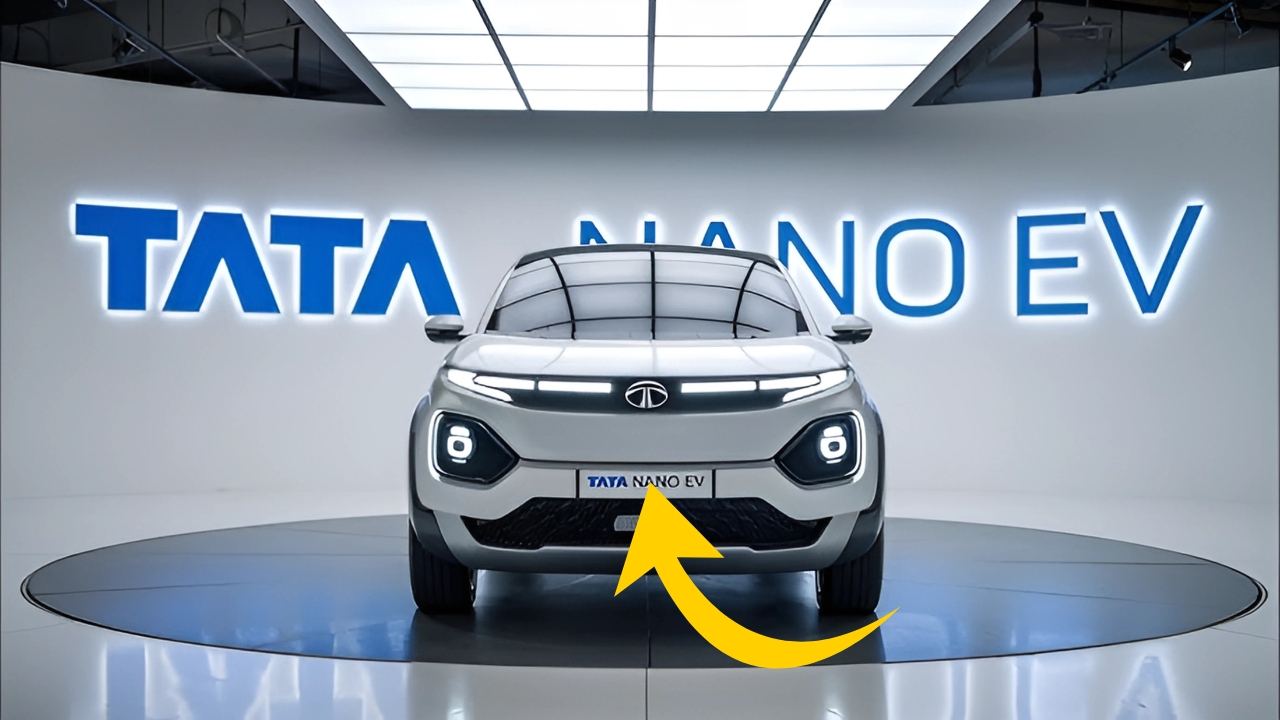Tata Nano EV: In an unexpected turn of events, Tata Motors is set to breathe new life into its legendary Nano nameplate, now transforming it into a fully electric vehicle that boasts impressive range capabilities befitting its compact size.
The forthcoming Nano EV signifies a remarkable rethinking of India’s once-beloved “people’s car,” utilizing Tata’s expanding expertise in electric vehicles to morph the modest Nano into a captivating solution for urban mobility.
Insiders familiar with the project reveal that the Nano EV significantly diverges from its predecessor in terms of mechanics, retaining only the basic proportions and philosophy.
This new incarnation has been meticulously designed from the ground up as an electric vehicle, incorporating Tata’s Ziptron technology that has shown great promise in the Nexon EV and Tigor EV models.
“This isn’t just an electrified version of the original Nano,” shares an industry insider, wishing to remain anonymous.
“It’s a total reimagining that keeps the fundamental idea of accessible transport, while embracing the benefits that electric powertrains provide for smaller vehicles.”
A standout feature of the upcoming model is its range, which is nothing short of impressive.
Engineering sources indicate that the Nano EV will offer around 250 kilometers of real-world range on a single charge, making it competitive among affordable EVs, especially given its compact dimensions.
This “dhakad” (remarkable) range is made possible by a carefully designed 21 kWh lithium-ion battery pack that uses cutting-edge cell chemistry from Tata’s battery technology partner.
Tata Nano EV Urban-Focused Performance
Reports suggest that the Nano EV will feature a single electric motor powering the rear wheels, reminiscent of the original Nano’s layout, generating roughly 40 horsepower and 110 Nm of torque at an instant.
While these numbers may appear modest, they signify a notable enhancement over the original Nano, promising lively acceleration in city driving scenarios thanks to the expected curb weight of under 750 kg.
Charging capabilities will include standard AC charging that can recharge the battery from 10% to 80% in around 6 hours using a home charger, with DC fast charging permitting the same range increase in just 60 minutes – facilitating intercity travel with proper planning.
Rajiv Sharma, a former Tata Motors electric vehicle division engineer and knowledgeable about early development models, asserts: “The instant torque delivery gives it a noticeably more responsive feel compared to the original Nano.
With its low center of gravity from the floor-mounted battery pack, it exhibits surprising confidence and stability in handling.”
Tata Nano EV Contemporary Design with Nostalgic Cues
Spy shots reveal that while the Nano EV retains compact dimensions akin to its predecessor, its design has evolved significantly to align with modern aesthetics and Tata’s current design language.
The overall shape remains tall and narrow, maximizing interior space within a minimal footprint but features more sculpted surfaces and contemporary detailing.
The front fascia incorporates aspects from Tata’s existing EV lineup, showcasing a closed-off grille with blue accents that signify its electric drive.
Premium touches like LED lighting both front and back elevate its appearance, while the wheel size has increased to 14 inches, responding to critiques of the original Nano’s smaller 12-inch wheels.
Inside, the dashboard adopts a minimalist layout focused around a 7-inch touchscreen infotainment system.
Practical physical controls for climate functions remain, a smart choice considering Indian weather conditions, while a digital instrument cluster presents essential vehicle information.
Reports indicate that materials and build quality mark a substantial upgrade from the original Nano, reflecting changing consumer expectations, even at this price point.
Tata Nano EV Urban Mobility Solution with Practical Appeal
Tata has strategically positioned the Nano EV as a practical urban mobility solution rather than just an entry-level model.
The vehicle will offer connected car functionality through Tata’s ZConnect app, allowing remote monitoring of charge status, cabin pre-conditioning, and geofencing features.
Safety features have advanced significantly, integrating dual airbags, ABS with EBD, and electronic stability control, enhancements that were lacking in the original Nano, showcasing Tata’s strong commitment to improved safety across its range.
Perhaps the most striking facet is the vehicle’s efficiency, with energy consumption estimated at around 8.4 kWh per 100 kilometers, making it one of the most power-efficient passenger cars available.
Such efficiency leads to incredibly low operating costs, projected at just ₹1.20 per kilometer—about one-third of the cost of petrol-powered counterparts.
Tata Nano EV Market Positioning and Timeline
Reports indicate that the Nano EV will serve as a gateway to Tata’s expanding electric vehicle lineup, with pricing anticipated to start around ₹5 lakh after factoring in government incentives.
This strategy aims to position the Nano EV as a notably more affordable option compared to current electric passenger vehicles while providing a practical range for urban and suburban applications.
Production is reportedly slated to begin in the fourth quarter at Tata’s Sanand facility, with an expected market debut early next year.
Initial production efforts aim for 3,000 units per month, although this might adjust based on market demand.
“The timing appears perfect,” mentions automotive analyst Vikram Patil. “With escalating fuel prices, expanding charging infrastructure, and heightened environmental awareness, an accessible electric vehicle with real-world usability could gain considerable traction, particularly as a second vehicle for urban families or for young professionals in search of efficient commuting options.”
